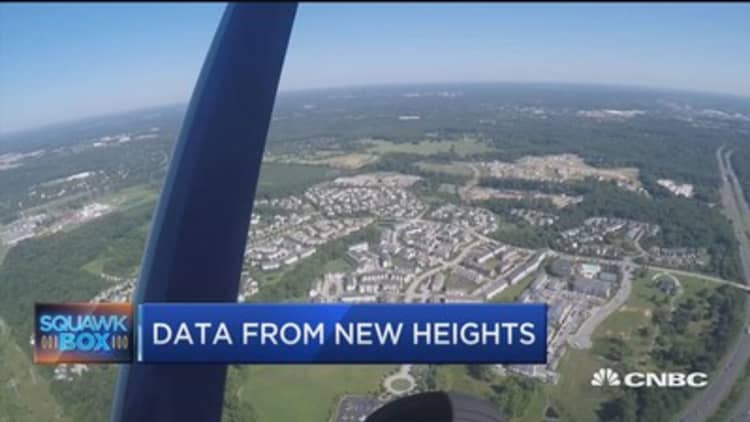
ABOVE SOUTHERN MARYLAND — Andy Florance is spying on millions of miles of real estate in the United States and around the world, as his team is doing on this day over the suburbs of Washington.
Using a low-flying, military-grade reconnaissance plane, equipped with cameras once used to gather data over Iraq and Afghanistan, CoStar Group, a commercial real estate information company, is gathering about twice as much construction data as its competitors. It is exactly what CoStar CEO Florance envisioned a year ago, when he made a multimillion dollar buy into the technology.
"Investors, lenders, developers, people that manage apartment buildings need to understand exactly how much new competitive supply is coming into each sub-market or neighborhood so they can set rents, they can determine what additional inventory they want to build," said Florance, standing in a hangar in front of the small white plane. "This technology allows us to track construction activity in the United States in a way that no one has ever been able to do."
The government tracks commercial construction data, as do other companies, through building permits, but it is often revised over and over and is never exact. CoStar, like its competitors today, used to put more than 1,000 researchers in cars crisscrossing the nation to gather data from the ground. That is time-consuming, tedious and expensive. It would take CoStar, for example, a year to fully cover the Baltimore area; with the small Cessna plane and mapping system, it can do it in three days, with far more accuracy and cost efficiency.
"We can actually operate and cover the United States, 168 markets, for less than $1 million a year using this technology," said Florance. "We typically collect twice as much under-construction activity as any of our competitors, and that can be as much as hundreds of thousands of apartment units that we know about that no one else knows about."
Florence came up with the idea when a fellow parent in his son's third grade class invited him to a trade show for the Air Force. He saw the camera and immediately recognized how this technology, designed for war, had an unparalleled peace-time benefit. It could cover everything from apartments to offices to farm land and ranches. CoStar began using it a year ago and is now considering expanding to single-family construction.
Flying in the plane over suburban Maryland, Amber Surrency, a former U.S. Marine and now aerial research photographer for CoStar, follows colored dots on a screen sent to her by the camera system underneath the plane.
"Over here you can kind of tell where the built-up areas are, which are some of these green dots," she said, pushing past the dots and pulling up ground images of apartment buildings. "The green dots are telling me that this is information CoStar knows is under construction."
Other colors tell her about properties that may not be, literally, on anyone's radar. The information is valuable on several levels. For developers, it helps to set rents.
"New construction activity will move rents down, so if I own a large building, and two new buildings are being built right next to my building, I need to lower my rents before they deliver, so that I can lease up my building before I have to compete against these new buildings," Florance said. "Often the decision-makers that are setting rents are thousands of miles away. Being able to capture really high quality information like this and provide it to our clients allows them to more effectively set their rents and be able to position against competitors remotely."
For lenders, if they are considering loaning money to a developer to put up a building, they need to know if there are five other buildings that are going to be competing against that building. This data provide the answers.
CoStar not only mines the data to sell to clients, it also uses it to find clients. CoStar owns apartments.com, one of the largest rental websites in the nation. While it has a strong brand, not all apartment landlords know about it; CoStar can use the plane to find new apartment buildings and then market the website to those landlords. In the past year, CoStar claims it discovered 250,000 apartment units under construction that no one from the traditional information sources knew about. CoStar reports generating nearly $34 million annually in advertising revenue on the site.
In real estate, as in everything else today, information is invaluable. In real estate, however, it can mean the difference between being right and being wrong, because the competition is not always visible in an industry that covers millions of miles.


